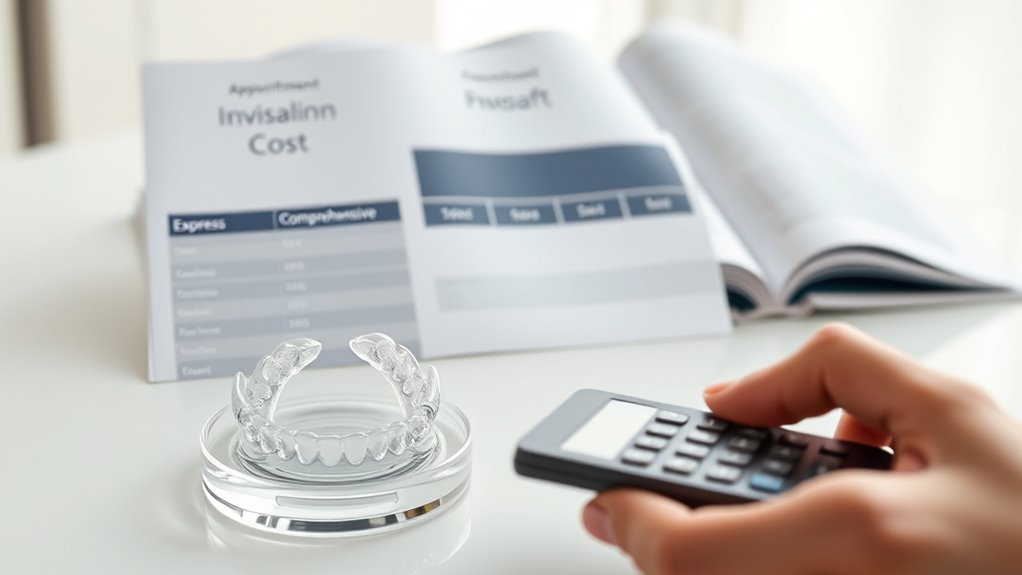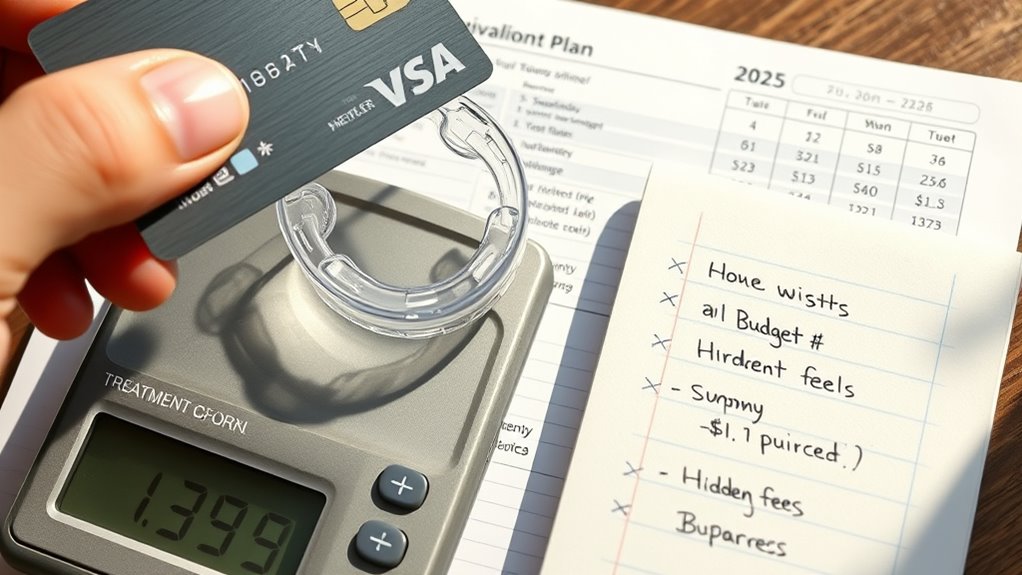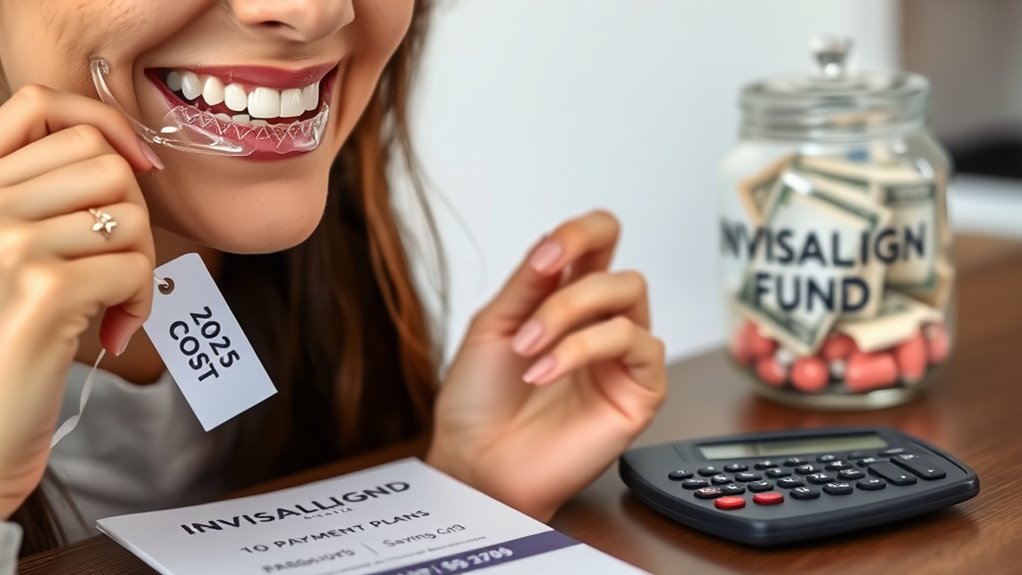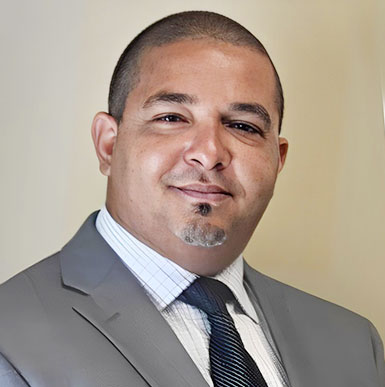In 2025, you'll pay around $5,000 on average for Invisalign without insurance, with prices ranging from $3,000 to $8,000 depending on case complexity. Mild cases start at $1,500-$3,000, while severe corrections can reach $9,500. Your location greatly impacts cost—urban areas typically charge $6,000-$8,000 versus $3,000-$5,000 in rural regions. Treatment duration varies from 6-24+ months based on severity. Exploring financing options and regional price differences can substantially reduce your out-of-pocket expenses.
Average Invisalign Costs in 2025

The national average cost for Invisalign treatment without insurance stands at $5,000 in 2025, with treatment expenses typically ranging from $3,000 to $8,000 depending on case complexity.
Invisalign cost trends indicate significant price variations based on several factors. Express or Lite packages for minor corrections start at $1,500-$3,000, while extensive plans for severe cases can reach $7,000-$9,500. The higher price for severe malocclusions reflects the need for more aligners and longer treatment duration. Patient compliance with wearing aligners 20-22 hours daily is crucial for success and can prevent additional costs from extended treatment times. Compared to traditional braces, Invisalign can be $1,000 cheaper while offering aesthetic advantages.
Geographic location dramatically affects treatment affordability. You'll pay premium prices in metropolitan areas like NYC and Toronto ($6,000-$9,000) compared to rural regions ($3,000-$5,000).
Case complexity creates distinct price tiers: mild cases ($1,500-$3,500), moderate realignments ($3,500-$6,000), and severe malocclusions ($6,000-$9,000+).
Treatment duration directly correlates with costs, with severe cases requiring 30-45 aligners over 18-24+ months.
Key Factors That Influence Your Invisalign Price
Your Invisalign treatment cost depends primarily on the complexity of your dental misalignment, with severe cases requiring more aligners and longer treatment periods than mild adjustments. Clear plastic aligners provide a discreet orthodontic option compared to traditional braces.
Geographic pricing varies greatly, with urban centers like NYC commanding premium rates while rural providers often charge 30-40% less for identical treatment plans. The national average cost for Invisalign treatment is approximately $4,978 according to recent data.
The expertise level of your provider directly impacts pricing, as Diamond Plus-tier specialists and board-certified orthodontists typically charge 10-20% more than general dentists but may deliver more efficient results with fewer refinements. Many orthodontists offer flexible financing options to make treatment more affordable through monthly payment plans.
Case Complexity Matters
When evaluating potential Invisalign costs, case complexity emerges as the primary determinant of your final investment. Your orthodontic issues directly dictate both treatment duration and materials required during your case evaluation. Mild crowding might need just 15-20 aligners over 6 months, while severe bite corrections demand 30+ aligners spanning two years. Invisalign providers include both orthodontists and general dentists with varying fee structures. Without insurance coverage, many patients find payment plans offered through dental offices help make treatment more financially manageable. Location plays a significant role in pricing, as urban clinics typically charge premium rates compared to their rural counterparts.
| Complexity | Cost Range | Treatment Duration |
|---|---|---|
| Mild | $1,200-$4,500 | 6-12 months |
| Moderate | $4,000-$6,000 | 12-18 months |
| Severe | $6,000-$9,000+ | 18-24+ months |
Overbites and underbites cost 15-25% more than simple alignment issues due to required treatment customization, including precision attachments and elastics. Crossbites necessitate 10-15 additional aligners compared to straightening-only cases, adding $1,000-$2,500 to your total. Keep in mind that single-arch treatments typically reduce costs by 20-30%.
Location Affects Pricing
Beyond case complexity, geographic location stands as a major determinant of your Invisalign investment. Urban pricing typically ranges from $6,000–$8,000 due to higher operational costs, whereas rural pricing averages $3,000–$5,000 reflecting lower overhead expenses.
This disparity persists across North America, with metropolitan areas like New York City commanding $7,000–$9,000, while rural Midwest providers charge as little as $3,000–$4,500. The cost differences stem from tangible economic factors: urban practices pay 40–60% more for rent, lab fees, and marketing. Experienced orthodontists often charge premium rates due to their expertise and reputation.
Cities with cost-of-living metrics exceeding national averages by 20% correlate with $1,500–$2,000 price increases.
Despite higher urban rates, competition occasionally drives promotional pricing in saturated markets, potentially narrowing the urban-rural divide by 5–10% through special offers and package deals.
Provider Experience Costs
Provider experience represents one of the most influential factors in determining Invisalign treatment costs.
Invisalign's tiered provider system (Bronze through Diamond II) directly affects your investment, with top-tier orthodontists charging $1,000-$3,000 more than general dentists.
This price differential correlates with measurable treatment outcomes. Diamond-level providers deliver 10-20% higher success rates for complex cases, potentially reducing long-term expenses through fewer refinements and shorter treatment durations.
High-tier providers typically include thorough services—diagnostic imaging, refinements, and retainers—in their initial fee structure.
While budget-conscious patients might gravitate in the direction of lower-tier providers offering reduced rates, consider the value proposition. Just as with Invisalign costs in Nashik, where treatment ranges from ₹1,50,000 to ₹6,50,000 depending on case complexity, provider selection significantly impacts overall value.
Provider expertise greatly impacts treatment efficiency, particularly for moderate to severe malocclusions where specialized orthodontic knowledge prevents costly complications and treatment extensions.
Comparing Invisalign Expenses Across Different U.S. Regions
Invisalign costs vary considerably across U.S. regions, with Northeast and West Coast metropolitan areas commanding premium prices of $6,000-$9,000 compared to the more moderate $4,000-$7,000 in Midwest locations.
You'll typically pay 25-40% more in urban centers than in rural communities due to higher provider overhead expenses and operational costs.
Texas and Florida represent notable exceptions to regional pricing trends, offering treatment for as low as $1,800 for straightforward cases—substantially below the national average.
Regional Price Variations
When examining Invisalign treatment costs across the United States, significant geographic disparities emerge that directly impact what you'll pay out-of-pocket.
Regional pricing reveals coastal states command premiums of 15-25% above inland counterparts, with Rhode Island ($6,516), Hawaii ($6,192), and New York ($6,177) topping the charts.
Treatment affordability improves substantially in states like Utah ($3,668), Texas ($3,967), and Ohio ($4,044), falling well below the $5,108 national average.
Your location's cost-of-living index directly correlates with treatment expenses—areas exceeding 110 on this scale typically charge more.
Competition also drives pricing; states with fewer providers like Wyoming ($5,722) offer less negotiating power.
Southern states maintain mid-range costs, while Midwestern states present better value propositions for budget-conscious patients seeking alignment therapy.
Many orthodontic offices in these various regions offer payment plans to help manage the higher initial costs associated with Invisalign treatment.
Urban vs. Rural Costs
Geographic location within a state substantially influences your out-of-pocket Invisalign expenses, creating a pronounced urban-rural cost divide across America.
Urban pricing typically ranges from $4,500–$8,000+, reflecting 25-50% higher operational costs, greater provider expertise, and increased competition. You'll find 3-5x more Diamond/Platinum-tier practitioners in metropolitan areas, commanding premium fees for their specialized training.
Rural pricing averages $3,000–$6,000, benefiting from 15-30% lower overhead expenses. However, you'll encounter 50-70% fewer providers, limiting your negotiating power despite potential savings.
Rural practices rarely offer the 15-25% seasonal discounts common in competitive urban markets. Insurance coverage further widens this gap, with urban providers accepting 20-30% more PPO plans, potentially reducing your expenses by $500–$1,500 compared to rural counterparts.
Express vs. Comprehensive Treatment: Breaking Down the Cost Differences

Understanding the distinct cost structures between Express and Extensive Invisalign treatments is essential for making an informed financial decision. Express treatment benefits include considerably lower costs ($1,500-$3,000) for minor alignment issues, with treatment completing in just 3-6 months. Thorough treatment drawbacks include higher investment ($5,700-$8,000+) and longer treatment duration (12-24 months).
| Treatment Type | Cost Range | Treatment Duration |
|---|---|---|
| Express/Lite | $1,500-$4,500 | 3-6 months |
| Thorough | $5,700-$8,000+ | 12-24 months |
| Express Lite | $3,000-$4,500 | 6-9 months |
Your treatment complexity directly determines your cost. Express options address minor spacing or crowding issues with 5-14 aligners, while Thorough treatments tackle severe malocclusion, complex bite problems, and jaw alignment with 30-45+ aligners and unlimited refinements.
Payment Plans and Financing Options for Invisalign
Making Invisalign treatment financially accessible requires exploring different payment options beyond the sticker price.
Most providers offer in-house financing with monthly payments ranging from $50-$300, typically requiring 10-30% down payments and terms spanning 12-60 months.
Flexible in-house financing spreads your investment into manageable monthly installments, making your smile journey immediately affordable.
Third-party financing expands your options considerably. CareCredit provides 6-24 month interest-free plans, while LendingClub and Sunbit offer personal loans with 5-25% APR. HFD financing is another excellent option with nearly 100% approval rates regardless of credit score.
For tax advantages, utilize FSA/HSA accounts to cover up to $7,000+ annually with pre-tax dollars. Some patients find significant savings by using these pre-tax payments for their orthodontic treatment.
Consider available discounts: upfront payments may qualify for 5-10% reductions, while referral programs can save $100-$500 per successful referral. Total Invisalign treatment costs can range from $3,000 to $8,000 depending on your case complexity and provider location.
When evaluating payment plans, compare interest rates (0-29%), term lengths, and potential late fees to determine the most cost-effective financing option.
Hidden Expenses to Consider When Budgeting for Invisalign

While the base cost of Invisalign treatment receives most attention, several hidden expenses can greatly impact your total financial commitment.
Post-treatment retainer maintenance represents a significant ongoing expense, costing $100-$600 annually for replacements that aren't typically included in initial treatment quotes. You'll need to maintain these retainers indefinitely to preserve your results.
Additional aligner fees apply when replacements are needed due to loss or damage. Many providers charge per replacement set, creating unexpected costs during your treatment experience.
The distinction between custom and standard retainers also affects your long-term financial obligations. Getting at least three price quotes from different providers can help you identify the most cost-effective option, as price differences can vary by thousands of dollars. Geographic location significantly impacts overall Invisalign pricing, with urban areas typically charging premium rates compared to rural regions. Unlike alternative treatments such as traditional or ceramic braces, Invisalign offers aesthetic appeal and removability that many patients find worth the investment.
When calculating your Invisalign investment, factor these continuing expenses into your budget. The true cost extends beyond the initial treatment phase, potentially adding thousands to your lifetime dental expenses.
Invisalign vs. Traditional Braces: A Cost Analysis
When comparing Invisalign and traditional braces financially, you'll uncover significant differences in both upfront costs and long-term value. Invisalign's $3,000-$8,000 price range typically exceeds traditional braces' $2,500-$7,500 cost structure, though treatment duration often favors Invisalign advantages with shorter timeframes. Geographical location can significantly impact pricing for both treatment options, with urban areas generally charging more. Additionally, clear ceramic braces fall between metal braces and Invisalign in terms of price point, ranging from $3,000 to $7,000.
| Comparison Factor | Invisalign | Traditional Braces |
|---|---|---|
| Average Cost | $3,000-$8,000 | $2,500-$7,500 |
| Treatment Duration | 6-18 months | 18-24 months |
| Insurance Coverage | Often limited | Generally better |
Complex corrections reveal braces drawbacks in treatment length but demonstrate greater cost-effectiveness for severe malocclusions. While Invisalign utilizes premium proprietary materials and technology—increasing production costs—its shorter treatment timeline for moderate cases may ultimately deliver comparable lifetime value despite higher initial investment.
Ways to Save Money on Invisalign Without Insurance

The high out-of-pocket cost of Invisalign treatment needn't be prohibitive for patients without insurance coverage. Utilizing tax-advantaged HSA/FSA accounts can reduce expenses by 20-30% through pre-tax contributions, with 2025 limits of $3,850 for individuals and $7,750 for families.
Consider flexible payment options, including in-office installment plans with down payments as low as $500 or third-party financing offering 0% interest for 12-24 months.
Discount programs through retailers like Costco provide $400 off when combined with provider promotions. Comparison shopping among 3-5 providers can yield significant savings, particularly at dental schools offering 30-50% reductions.
For budget-conscious patients, Invisalign alternatives like at-home aligners start at $1,950, though they lack professional oversight.
Seasonal promotions and referral programs can further reduce costs by $200-2,500.
Is Invisalign Worth the Investment? Evaluating Long-Term Value
Considering the substantial investment of $3,000-$9,000 for Invisalign treatment without insurance coverage, patients naturally question whether the benefits justify the cost.
When evaluating long-term value, the financial considerations extend well beyond initial pricing.
Invisalign benefits include preventing future dental expenses of $1,500-$5,000 in restorative procedures by reducing abnormal tooth wear. Treatment corrects malocclusion issues that could otherwise lead to TMJ disorders costing $2,000-$4,000 to treat.
Furthermore, the 40-60% reduction in plaque buildup considerably lowers periodontal disease risk.
Compared to alternatives, Invisalign offers comparable effectiveness to traditional braces with fewer maintenance costs.
The treatment's 90% satisfaction rate and potential career advantages from improved confidence further improve its value proposition, yielding a 10-year ROI of $3,000-$8,000 in avoided complications.
Frequently Asked Questions
Are Invisalign Results Permanent or Will Teeth Shift Afterward?
No, Invisalign results aren't inherently permanent. Your teeth will naturally shift afterward due to ligament memory and aging processes.
Long-term results require consistent retention protocols—95% of patients need lifelong retainers. Without proper retention, visible teeth shifting begins within 72 hours.
Bone remodeling takes 9-12 months to stabilize your new alignment. For maximum stability, you'll need either permanent bonded wires or consistent nighttime retainer use following your orthodontist's recommended retention schedule.
Can I Switch to Invisalign Mid-Treatment if I Already Have Braces?
Yes, you can switch from braces to Invisalign mid-treatment if you've reached 40-60% progress with your current braces.
This treatment change requires your orthodontist's approval through a digital scan assessment. Approximately 65-75% of cases qualify for braces compatibility with Invisalign.
You'll need good oral hygiene without active decay or gum disease.
This option isn't suitable for severe rotations, impacted teeth, or significant skeletal discrepancies.
How Does Smoking Affect Invisalign Treatment and Maintenance Costs?
Smoking considerably impacts your Invisalign treatment in multiple costly ways.
You'll face increased aligner replacement frequency due to staining and warping, requiring replacements every 1-2 weeks instead of biweekly.
Treatment duration extends by approximately 5-11 months because smoking breaks reduce daily wear time.
You'll incur substantial extra expenses from periodontal treatments ($500-$3,000), extra dental visits, specialized cleaning products, and complex restarts that affect 35% of smoking patients.
These complications collectively increase your total treatment costs by 30-60%.
Are Invisalign Attachments Visible and Do They Cost Extra?
Invisalign attachments are minimally visible – they're tooth-colored composite resin buttons (1-3mm) that improve aligner grip.
You'll notice different attachment types based on your treatment needs, with some providers offering lingual (back-surface) placements for maximum discretion.
Visibility increases when aligners are removed or if staining occurs from coffee, tea, or poor hygiene.
Regarding cost, attachments are included in your standard Invisalign treatment fee with no extra charges typically assessed.
Does Invisalign Treatment Require Taking Time off Work or School?
Invisalign treatment requires minimal time off work or school. Appointments occur every 8-12 weeks and typically last just 10 minutes, compared to traditional braces' more frequent visits.
You'll experience greater scheduling flexibility since aligners are removable for special events or activities. Your treatment duration (6-24 months) may include brief check-ups that can often be scheduled around your commitments.
Some providers even offer teleorthodontic options for certain check-ins, further reducing disruption to your schedule.

